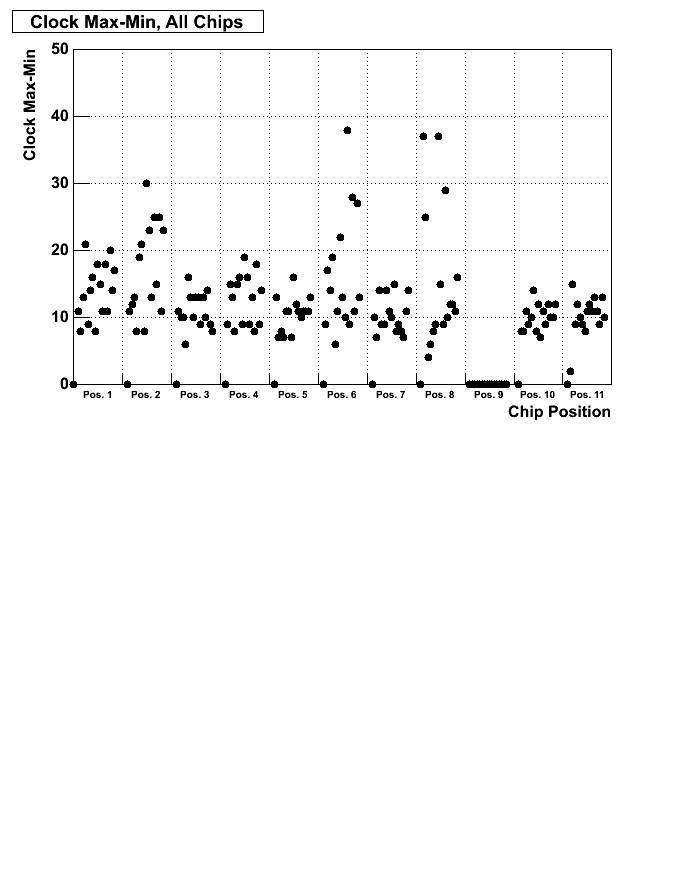Summary:
- Noise in position 1 is fixed by soldering or inserting a copper strip
along the right edge.
- Noise in position 2 is improved by covering a hole near position 2 with a
grounded copper patch
- Noise in position 6 went down to around 20 counts for no apparent reason,
although pictures indicate it is due to a copper strip along right (!?) edge.
- Noise in position 8 is reduced due to already mentioned factors: covering
a hole near position 2 and soldering a copper strip along the right edge
June 17. Inserting a copper strip along the right edge of
the board improves position 1:
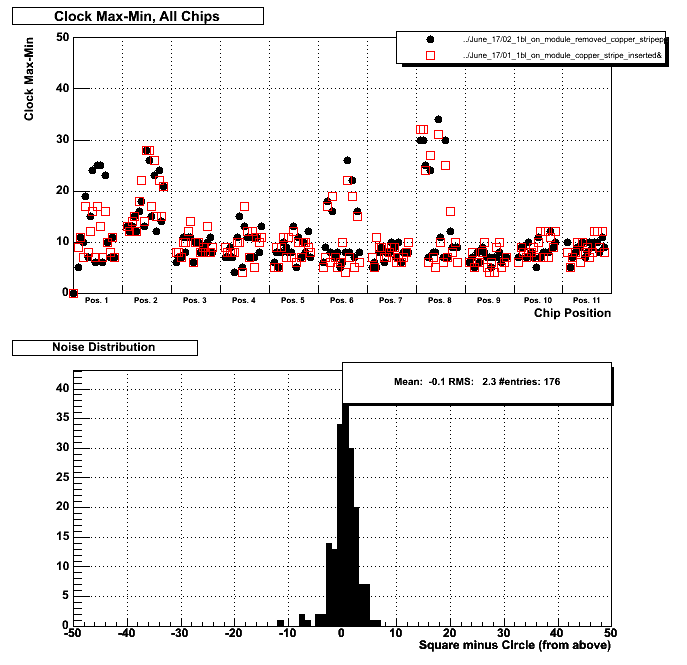
June 18. Removing caps around position 6 has no
effect:
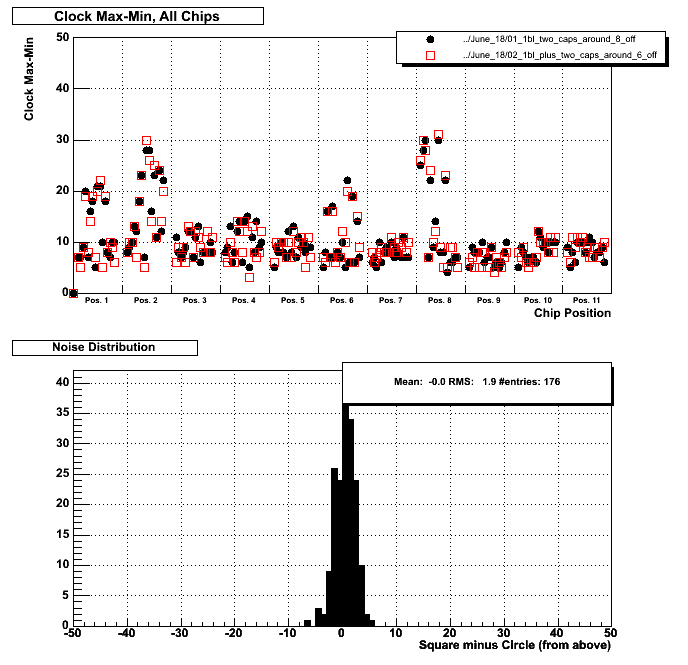
June 18. Removing test pulse components around
positions 1, 2, 8 has no effect:
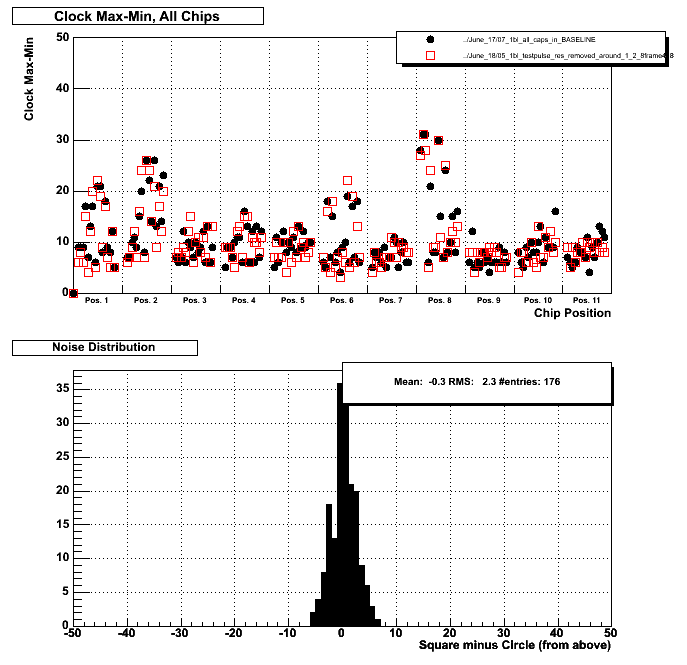
June 18. Removing a capacitor located next to a hole
near position 2 has a mixed effect on position 8:
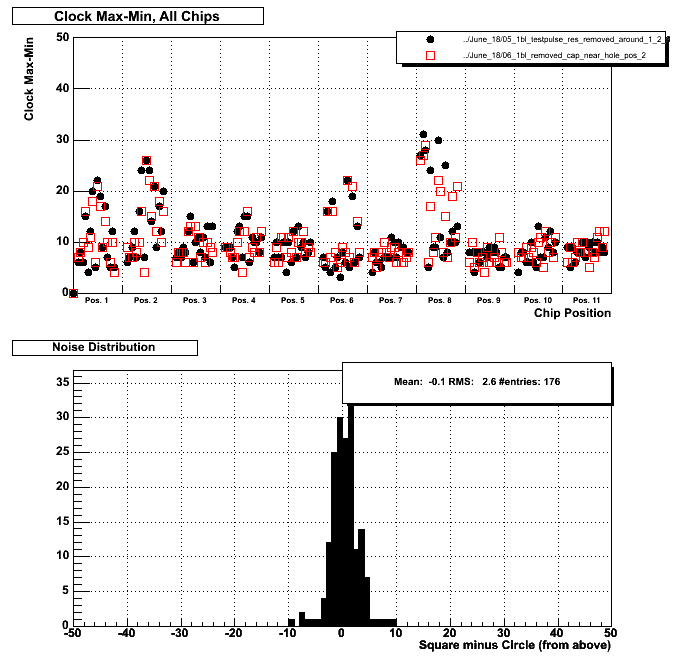
June 18. Inserting a copper strip along the right edge
improves significantly position 1 and fixes some problems in position
8:
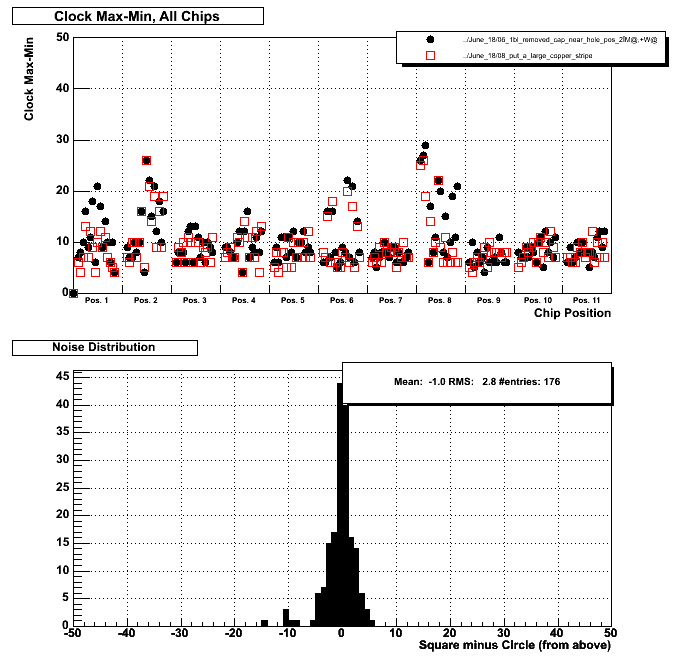
June 21. Soldering a copper strip along the right edge
has the same effect as just inserting a copper strip (position 1
improved):
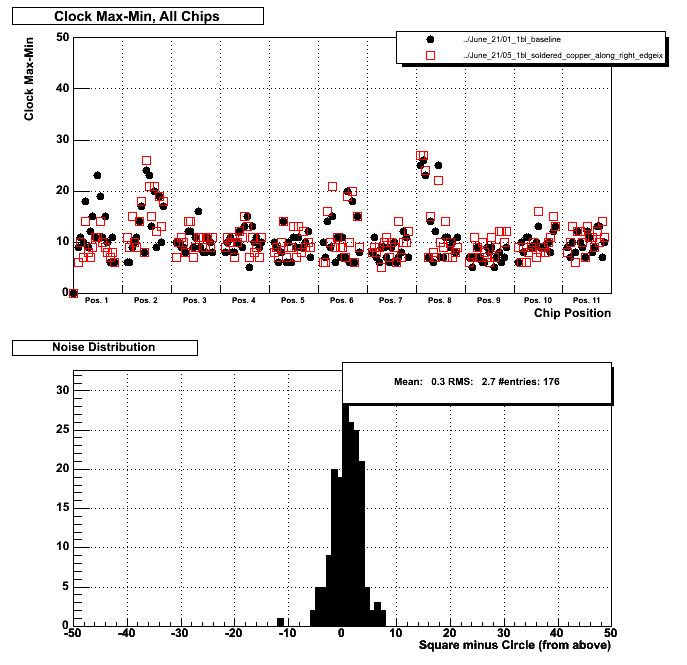
June 21. Soldering copper patches along some of the
holes near positions 2, 6, 8 improves noise near positions 2, 5, 6, but has
mixed effect on position 8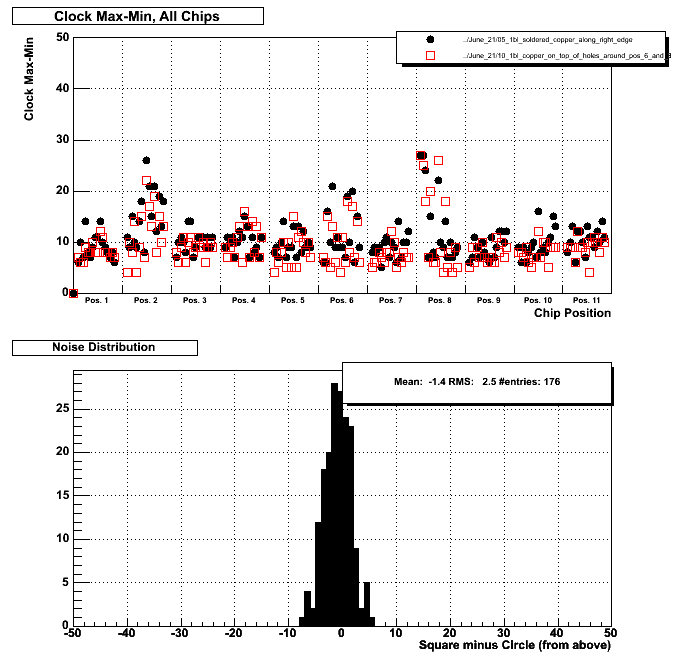
June 23. This plot combines the initial results from
June 17 and final results from June 23. This is the best I could achieve in
reducing clock noise in positions 1, 2, 6, 8.
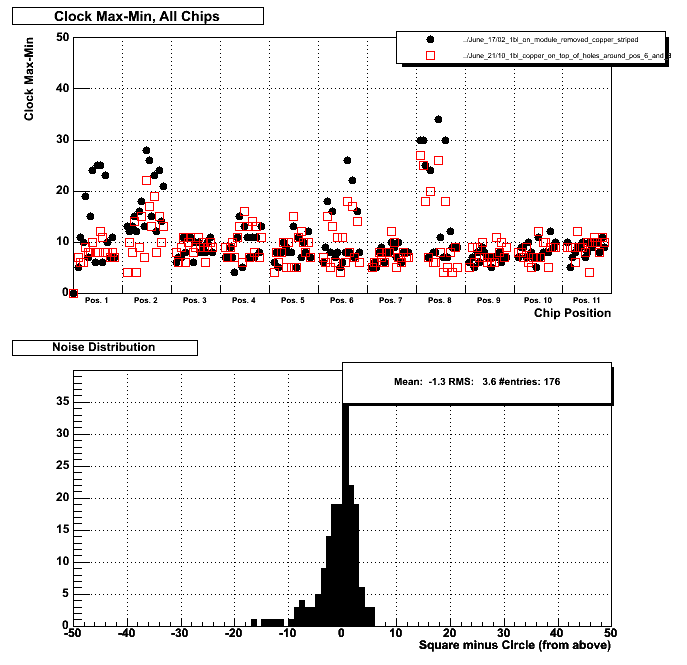
June 23. Finally, here is min-max noise of 1bl
measured at CERN. They also have extra noise in positions 2, 6, 8:
